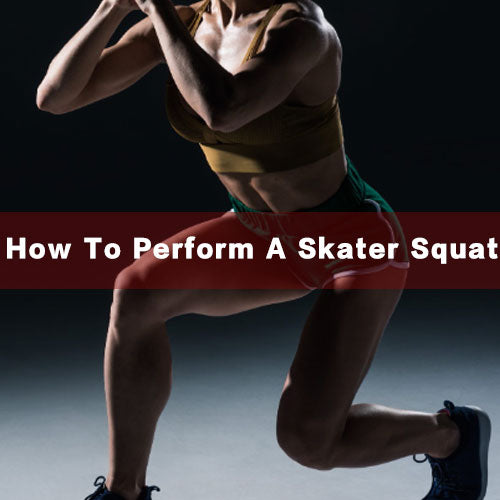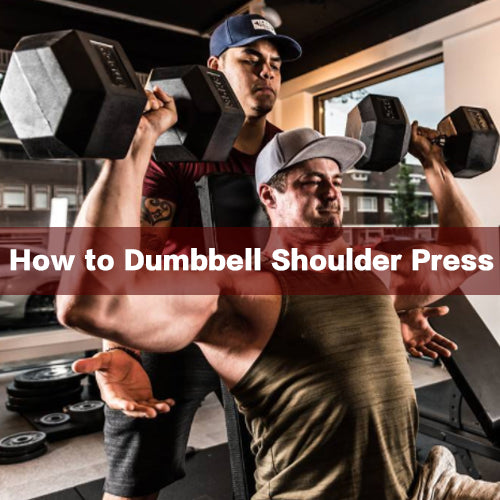
The suitcase deadlift is a highly effective exercise that targets multiple muscle groups, particularly the core and lower body. It mimics the movement of picking up a heavy suitcase, making it a functional exercise with real-world applications.
Table of content
What is a Suitcase Deadlift?
The suitcase deadlift is a compound exercise that primarily targets the muscles in your hips, glutes, hamstrings, core, and lower back. It involves lifting a weight, such as a dumbbell or a kettlebell, from the side of your body in a single-arm movement. The exercise helps improve overall strength, stability, and functional fitness, making it beneficial for athletes, fitness enthusiasts, and everyday individuals.
Proper Form and Technique
To perform the suitcase deadlift correctly and minimize the risk of injury, follow these steps:
- Stand with your feet shoulder-width apart and the weight placed beside one foot.
- Maintain a neutral spine and engage your core muscles.
- Bend at the hips and knees, keeping your back straight, and grip the weight with an overhand grip.
- With your core engaged and your shoulder blades pulled back, drive through your heels to stand up straight, lifting the weight alongside your body.
- Keep your shoulders square and your hips level throughout the movement.
- Lower the weight back down with control, maintaining proper form.
Suitcase Deadlift Benefits
Incorporating the suitcase deadlift into your workout routine can yield numerous benefits, including:
- Improved Core Strength: The exercise activates the core muscles, including the rectus abdominis, obliques, and transverse abdominis, resulting in a stronger and more stable core.
- Enhanced Grip Strength: Since the weight is lifted with one hand, the suitcase deadlift challenges your grip strength, improving your ability to hold onto objects in daily activities or sports.
- Increased Lower Body Strength: The movement primarily targets the glutes, hamstrings, and quadriceps, promoting strength and muscle development in these areas.
- Improved Posture and Spinal Stability: The suitcase deadlift engages the muscles of the lower back, promoting better posture and spinal stability.
- Functional Fitness: The exercise simulates real-life movements, making it valuable for enhancing everyday activities like lifting heavy objects or performing physical tasks.
Suitcase Deadlift Muscles Worked
The suitcase deadlift is a compound exercise that engages multiple muscle groups in the body. Here are the primary muscles worked during a suitcase deadlift:

Core Muscles: The suitcase deadlift heavily targets the muscles of the core, including the rectus abdominis (six-pack muscles), obliques (side abdominal muscles), and transverse abdominis (deep core muscles). These muscles play a crucial role in maintaining stability and proper posture throughout the movement.

Glutes: The gluteus maximus, gluteus medius, and gluteus minimus muscles, collectively known as the glutes, are engaged during the suitcase deadlift. They are responsible for hip extension, which is a crucial part of the lifting motion.

Hamstrings: The hamstring muscles, located at the back of the thighs, work eccentrically to control the lowering phase of the suitcase deadlift. They also contribute to hip extension and provide stability during movement.

Quadriceps: The quadriceps, a group of muscles located at the front of the thighs, work concentrically to extend the knees and straighten the legs during the lifting phase of the exercise.
Erector Spinae: The erector spine muscles, situated along the length of the spine, play a vital role in maintaining a neutral spine position during the suitcase deadlift. They help stabilize the spine and prevent excessive rounding or arching.
Forearm Muscles: As the weight is held in one hand during the suitcase deadlift, the muscles of the forearm, including the wrist flexors and extensors, are engaged to maintain a secure grip on the weight.
While these are the primary muscles worked during the suitcase deadlift, the exercise also activates other supporting muscles, such as the deltoids (shoulder muscles), trapezius (upper back muscles), and calf muscles, to assist in maintaining stability and balance throughout the movement.
4 Suitcase Deadlift Variations
To keep your workouts challenging and avoid plateaus, try incorporating these suitcase deadlift variations:
1.Barbell Suitcase Deadlift

The barbell suitcase deadlift targets the posterior chain and core, emphasizing unilateral strength and stability.
How to Do It:
- Setup: Stand with feet hip-width apart next to a loaded barbell.
- Starting Position: Bend at the hips and knees to grab the barbell with one hand, keeping your back straight and chest up.
- Execution: Lift the barbell by extending your hips and knees until standing upright, keeping shoulders level.
- Return: Lower the barbell back to the ground in a controlled manner.
Tips:
- Keep your core tight to maintain balance.
- Avoid leaning to one side; keep shoulders level.
- Move slowly and with control to maximize muscle engagement.
- Perform 3 sets of 8-10 reps on each side.
2.Dumbbells Suitcase Deadlift

How to Do It:
- Setup: Stand with feet hip-width apart, holding a dumbbell in one hand by your side.
- Execution: Bend at the hips and knees to lower the dumbbell towards the ground, keeping your back straight and chest up.
- Return: Drive through your heels to lift the dumbbell back to the starting position, keeping your shoulders level.
Tips:
- Engage your core to maintain balance.
- Keep your back straight throughout the movement.
- Move slowly and with control to maximize muscle engagement.
3.Single-Arm Suitcase Deadlift

How to Do It:
- Setup: Stand with feet hip-width apart, holding a dumbbell or kettlebell in one hand by your side.
- Execution: Bend at the hips and knees to lower the weight to the ground while keeping your back straight and chest up. Lift the weight by driving through your heels and extending your hips and knees until you are standing upright.
- Return: Lower the weight back to the starting position in a controlled manner.
Tips:
- Maintain a neutral spine and avoid leaning to one side.
- Engage your core to stabilize your body.
- Perform 3 sets of 10-12 reps on each side.
4.Suitcase Deadlift with Resistance Bands

Attach resistance bands to the weight and step on them, increasing the resistance and intensifying the exercise.
7 Suitcase Deadlift Alternatives
Barbell Deadlift

The barbell deadlift is a classic compound exercise that targets the same muscle groups as the suitcase deadlift. It involves lifting a barbell from the ground while maintaining proper form and engaging the core, glutes, hamstrings, and lower back.
Dumbbell Sumo Deadlift

Similar to the suitcase deadlift, the sumo deadlift focuses on the lower body, particularly the glutes, hamstrings, and quadriceps. Instead of a single-arm lift, you'll use both hands to hold a dumbbell or kettlebell between your legs with a wide stance.
Romanian Deadlift

The Romanian deadlift primarily targets the hamstrings, glutes, and lower back. It involves hinging at the hips while holding a barbell or dumbbell, keeping your legs slightly bent and emphasizing the stretch on the hamstrings.
Single-Leg Deadlift

The single-leg deadlift challenges your balance and stability while targeting the same muscle groups as the suitcase deadlift. Stand on one leg and hinge at the hips, lowering the weight towards the ground while extending the opposite leg behind you.
Farmer's Carry

The farmer's carry is a functional exercise that improves grip strength, core stability, and overall body strength. Simply hold a dumbbell or kettlebell in each hand and walk for a designated distance or time while maintaining proper posture.
One-Arm Row

The one-arm row targets the back muscles, including the latissimus dorsi and rhomboids. Use a dumbbell or kettlebell and bend forward with one hand supported on a bench or knee, then pull the weight up towards your torso, focusing on squeezing your back muscles.
Trap Bar Deadlift

The trap bar deadlift is also known as the hex bar deadlift or the trap bar squat. It involves using a specialized barbell that has a hexagonal or diamond-shaped frame, allowing you to stand within the bar rather than behind it. This unique design provides numerous advantages and makes the trap bar deadlift a popular choice among strength athletes, powerlifters, and fitness enthusiasts alike.
Remember to choose exercises that align with your fitness level and goals. Incorporating these alternatives can add variety to your routine, prevent plateaus, and target the desired muscle groups.
FAQs
What equipment do I need to perform suitcase deadlifts?
To perform suitcase deadlifts, you will need a weight, such as a dumbbell or a kettlebell, that you can lift with one hand. Choose a weight that challenges you but still allows you to maintain proper form throughout the exercise.
How do I determine the appropriate weight for suitcase deadlifts?
Start with a lighter weight and gradually increase the load as you become more comfortable and confident with the exercise. It's important to maintain proper form and avoid straining or compromising your technique by using excessively heavy weights.
How many reps and sets should I do for suitcase deadlifts?
The number of reps and sets will depend on your fitness goals and current fitness level. As a general guideline, aim for 8-12 reps per set and perform 2-4 sets. Adjust the weight and repetitions based on your individual needs and preferences.
Can beginners perform suitcase deadlifts?
Yes, beginners can perform suitcase deadlifts. However, it's important to start with lighter weights and focus on mastering the proper form and technique before progressing to heavier loads. If you're new to strength training, consider working with a qualified trainer to ensure you're performing the exercise correctly.
Can suitcase deadlifts cause pain?
If you experience pain during suitcase deadlifts, stop the exercise immediately. It could be a sign of improper form or an underlying injury. Ensure you use a weight that allows for proper control and consult a healthcare professional if the pain persists.
Is a suitcase deadlift better than a regular deadlift?
Not necessarily. Both exercises offer benefits. The regular deadlift allows you to lift heavier weight and builds overall strength, while the suitcase deadlift focuses on core stability, grip strength, and unilateral (one-sided) movement. You can incorporate both exercises into your workout routine.
Conclusion
Of all the exercises demonstrated, the suitcase deadlift is one of the simplest that can be applied at home. As it is a unilateral exercise, it will work on the depth of your abdominal muscles and also strengthens the grip which can really boost up the training. Well, forget about having a suitcase and get that dumbbell instead. Try suitcase deadlifts today, and transform the way your core and entire body moves and feels. Who would have thought that you would get much stronger!


